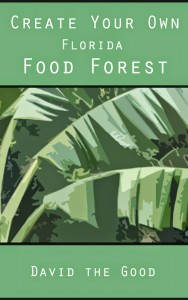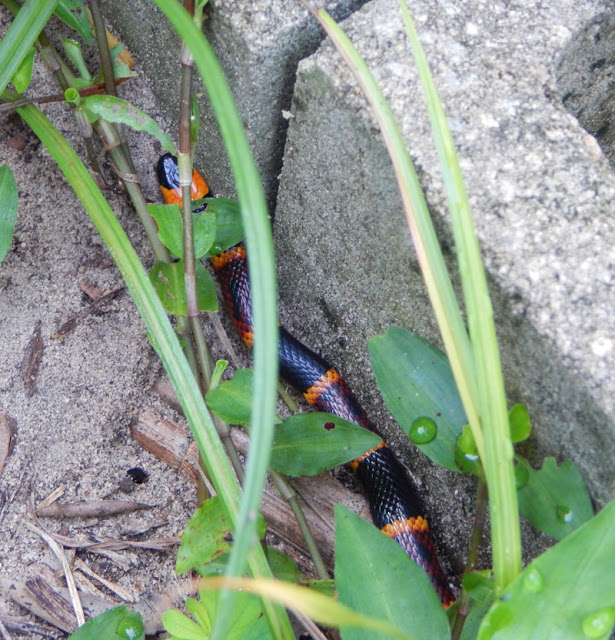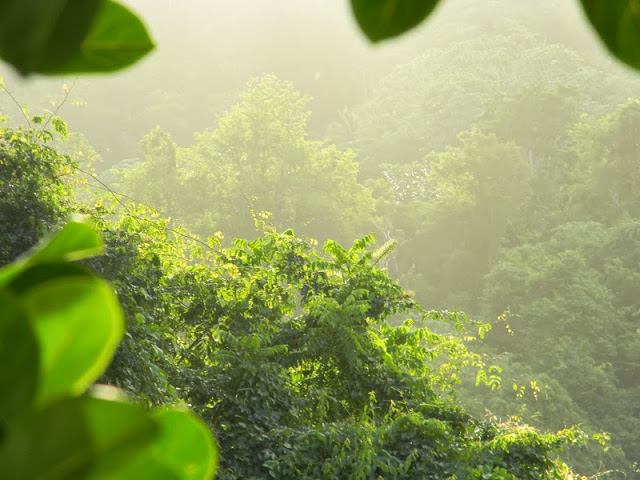Carol writes:
“I found your site after purchasing your book ‘Create Your Own Florida Food Forest’. I’m not in Florida, but thought your book would be helpful for my climate. It has been and has given me many ideas to adapt to my garden. I’m in the wet tropics of northern Australia.
 One line in your book really resounded with me, it was where you referred to “slithering death monsters”. I love that line, and I take it to heart. My garden is full of ‘slithering death monsters’. Some of the most venomous snakes known to humanity, live in my area and regularly visit my garden. Coastal Taipan, Eastern Brown Snake, King Brown Snake, Red-bellied Black Snake, to name a few.
One line in your book really resounded with me, it was where you referred to “slithering death monsters”. I love that line, and I take it to heart. My garden is full of ‘slithering death monsters’. Some of the most venomous snakes known to humanity, live in my area and regularly visit my garden. Coastal Taipan, Eastern Brown Snake, King Brown Snake, Red-bellied Black Snake, to name a few.
As you can imagine safely establishing a food forest under these circumstances can be challenging. Piled up branches or prunings could conceal slithering death monsters at my toes. So positioning such mulch must be carefully thought through. Being older I can no longer get to my feet quickly, so no kneeling, all gardening must be done from a standing position for a quick get away when needed (and there have been a few). Harvesting amid lush leafy growth requires its own strategies. I was once chased from a garden bed by a snake that did not appreciate my seed harvesting activities. I also do not recommend setting foot outside after sunset.
Oh yes, ‘slithering death monsters’ resonates within my being.”
While researching Costa Rica one day a few years back, I soon came to realize that my food forest designs for Florida didn’t necessarily carry over to the more exciting ecology of the tropics.
When deadly creatures lurk in brush and brush piles, trees and rock piles, well, creating a wild jungle of food isn’t the best idea, as it can get you killed. Going for an orchard with lots of shorn grass is safer.
The snakes of Florida aren’t a big deal, with the exception of water moccasins and diamondback rattlers, both of which are only common in certain ecosystems. Even the very venomous coral snake is an inoffensive creature with few deaths to its credit.

That one was wandering between my garden beds back in North Florida.
But when you have a list of snakes like “Coastal Taipan, Eastern Brown Snake, King Brown Snake, Red-bellied Black Snake” – yeah, a food forest design needs to take these creatures into account.
As much as you might love nature, nature doesn’t always love you. Actually, nature is a total jerk sometimes.
Plan accordingly.


14 comments
Hey David,
I thought coral snake is supposed to have yellow rings in addition to red?
The red rings were dark on this one, as were the yellow. Definitely a coral snake, though.
“Red and yellow, kill a fella.
Red and black, friend of Jack.”
Perhaps a food forest of mongoose?
Heh. Maybe. That would be the end for chickens, too, though.
Leon,
You are absolutely correct, but the shade of red can vary greatly from snake to snake, and sometimes (this being one of them) that the red is very dark. The common adage is “red and yellow, kill a fellow; red and black, venom lack” or some variation. If you look closely you will see that holds true in the above picture, that is a coral snake.
Red touch black, safe for Jack.
Red touches yellow, kills a fellow.
Problem is, I can never remember the poem long enough to be helpful when it matters.
The water mocassin is definitely a threat in Florida. That hit home last weekend. My 10 year old son and I were securing the property before Hurricane Irma. He was cutting through the garden and a cotton mouth bit him on the ankle. 4 days in ICU and 26 doses of the anti-venom later he is finally back at home and we’re still monitoring him closely. Doctors were fantastic at Shands. Amputation or even death was on the table when he 1st arrived and had to wait for the anti-venom to be made. Quite an emotional week. I found out the water mocassin is the 3rd most venomous in the US right under the Eastern Diamond back, and the Green tree Viper. Shocked to find out the Coral Snake not in the top 3. In the garden looking for these guys has to be 2nd nature to you.
Holy moly, man. That is terrible. I pray he recovers completely.
The prayers are appreciated. God was with him the whole time. He is recovering well. Thanks.
If you want less snakes, learn what the carnivorous birds in your area need, to set up home. They love to feed their young, on newly hatched reptiles. In my experience, food forest is better than exposed areas for keeping snake levels down. Simply because where there is the most food supply, there will also be the most carnivorous birds, to raise their young. But you have to allow them, flying room, and exposed branches to perch on. So not too thick with the understorey, and keep your footpaths mowed during summer.
What you recommend in Florida, does translate over. It’s just in Australia, we have to be more vigilant in how we build our food forests. Positioning bands of mowed lawn, through the food forest, will force snakes to go around, into a neighbour’s unmown paddock, than risk meeting with an aerial predator in your food forest. We actually encounter less snakes in our dry forested gully, than our neighbours on the ridge, who just have lawn and a few tall eucalyptus. Because the carnivorous birds raise their young in our gully, and keep the newly hatched reptile numbers, in check.
Although it’s great you acknowledge the potential danger, so people can plan to mitigate the risks where they live.
Red belly blacks are your friend. They are relatively less venomous and usually very sluggish and not easily riled up, and best of all they specialise in eating other snakes like the far more dangerous browns and taipans. They love water so maybe adding ponds will encourage them.
I didn’t believe it when I read it but I think our geese do indeed discourage snakes. I would regularly see large red bellies on my farm in the beginning but now I have a large flock of geese I rarely see them any more. They don’t eat the snakes but I think they make such a fuss when they see them the poor snakes simply go elsewhere.
Completely open space isn’t always the best way to avoid snake encounters. If you have defined overgrown areas or debris piles with open space in between they will usually slip away into them before you even know they are there in my experience. They are more likely to get aggressive if they feel exposed and threatened, particularly if cornered. Lastly I heard goat keepers swear that putting bells on their animals eliminated snake bites, so maybe you could add some to your gardening shoes to let them know you are coming.
Avenger
Good to hear your grandson is going to be OK. Had to be a scary time especially with a young one.
Over the years I have hunted & fished all over S. Fla. Moccasins attitude can vary greatly. Some are true bad-asses aggressively attacking and others want nothing to do with folks.
Craig
Great site! Lots of fun info. Many thanks. Search engines bring up a thousand sites without accompanying info on what “certain ecosystems” means, before you’ll get a site that will explain where to expect, when that’s what you’re looking for. Of course, in Florida, it really does mean to expect an alligator in EVERY body of water you see, the occasional alligator to ring your doorbell, moccasins on the back porch, a thousand yards from any water, and coral snakes in the petunias. I forgot, the fattest (half of a) snake I’ve ever seen not behind glass, which happened to block us from proceeding on the path under high powered lines out back and returning home, was a beautiful, dilute colored rattler not 400 feet from back yard. Even that fat rattler didn’t attempt to move his unbidden back half and laid perfectly still on the path proved the adage, they are more afraid of you than you are of them. Except racers, they want to know how your day is going.
Please don’t kill the snakes new Florida people, mice and rats are even more abundant. Don’t plant things right next to your paths, by your front doors, or where you keep the bins. Don’t walk small dogs near ponds.
Except for the alligator at the door, those are all my experiences in one of those overcrowded, packed in housing developments with postage stamp size yards and no green space apart from under power lines a ways out back. I did see a panther passing through looking for bunnies in 2009. A coral snake also managed to get on the next door neighbors doorknob while she walked the dog, trapping her outside. I’m an outdoorsy sort and used to have a big dog requiring much exercise so I SEE what my air-conditioned neighbors probably never do. Florida IS a “certain ecosystem”.
Comments are closed.